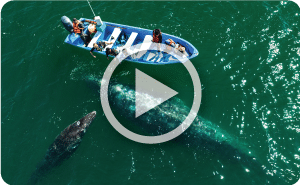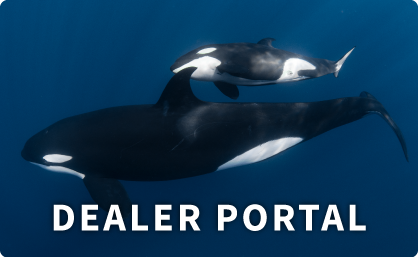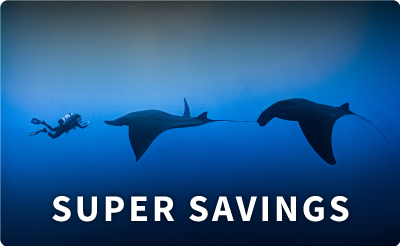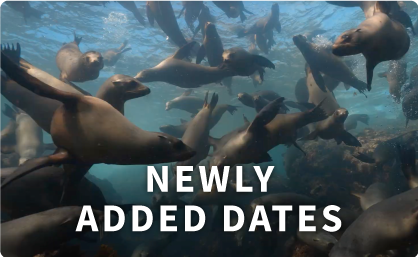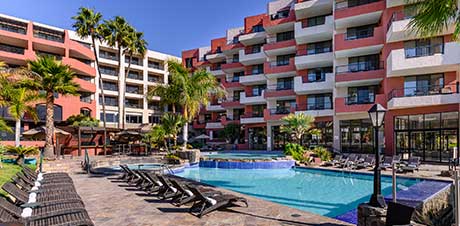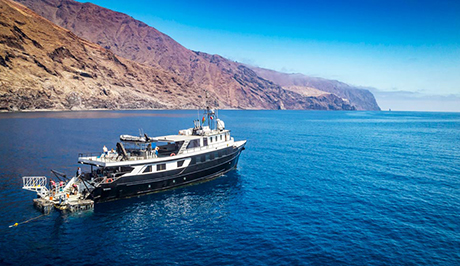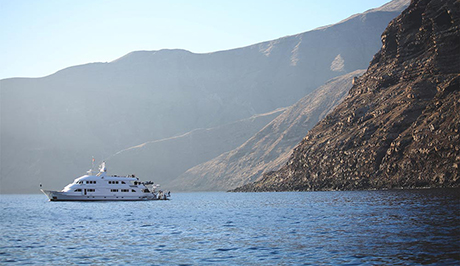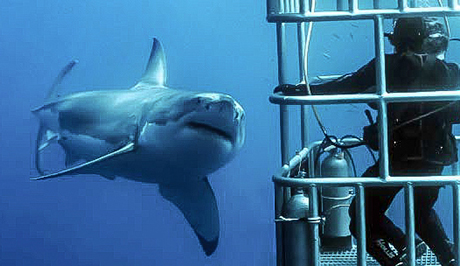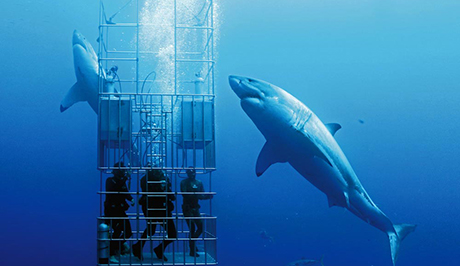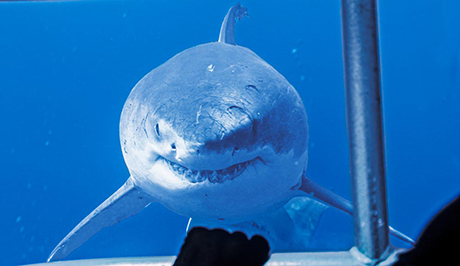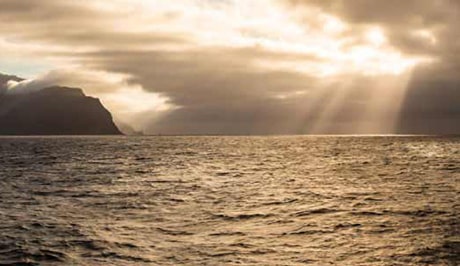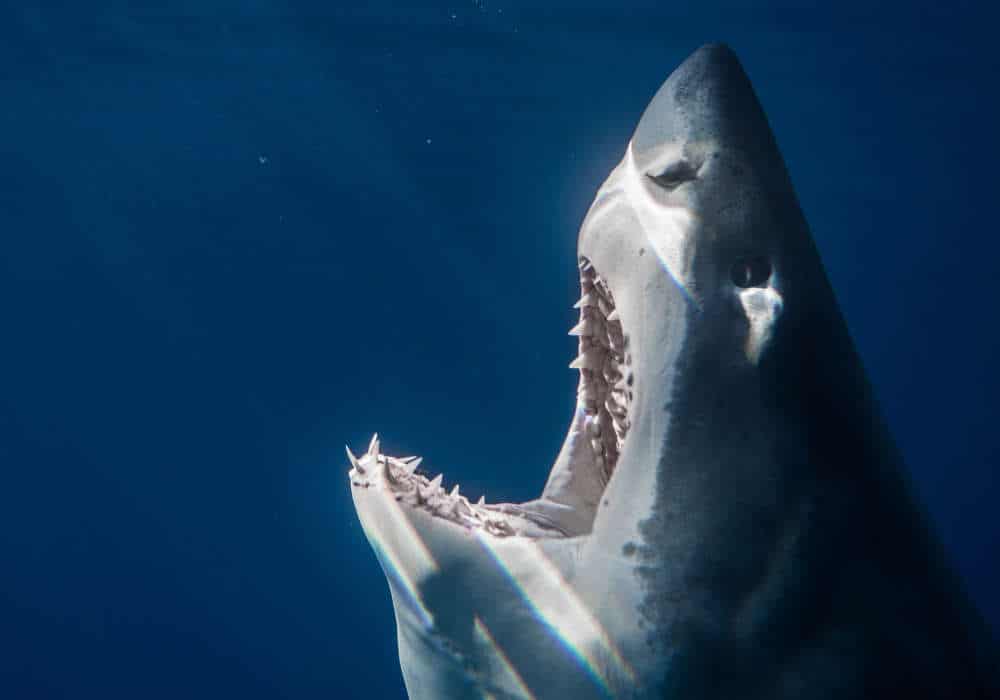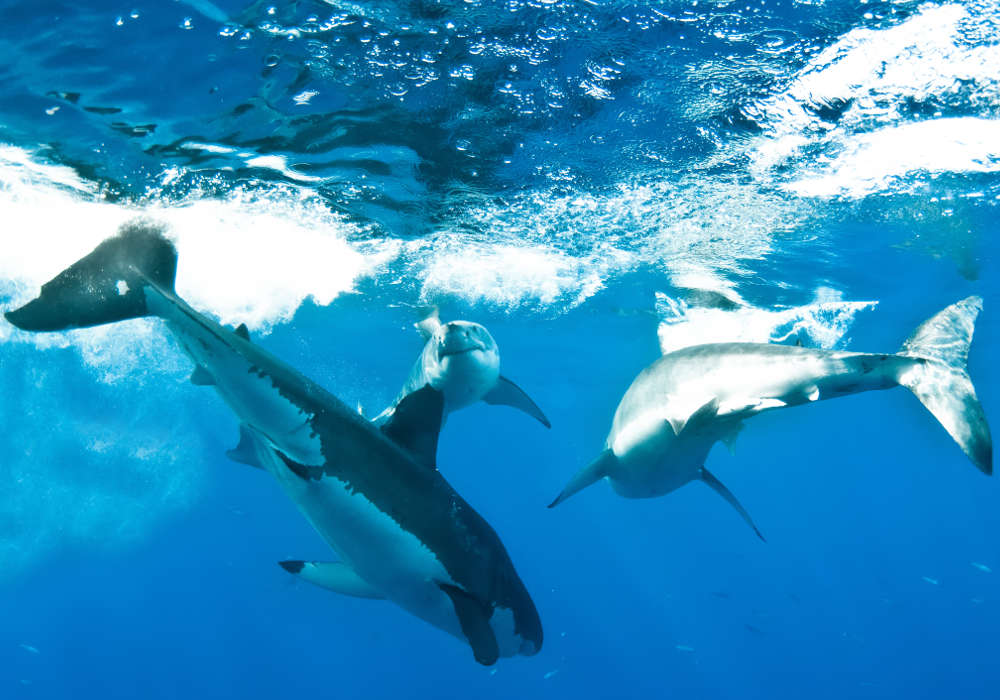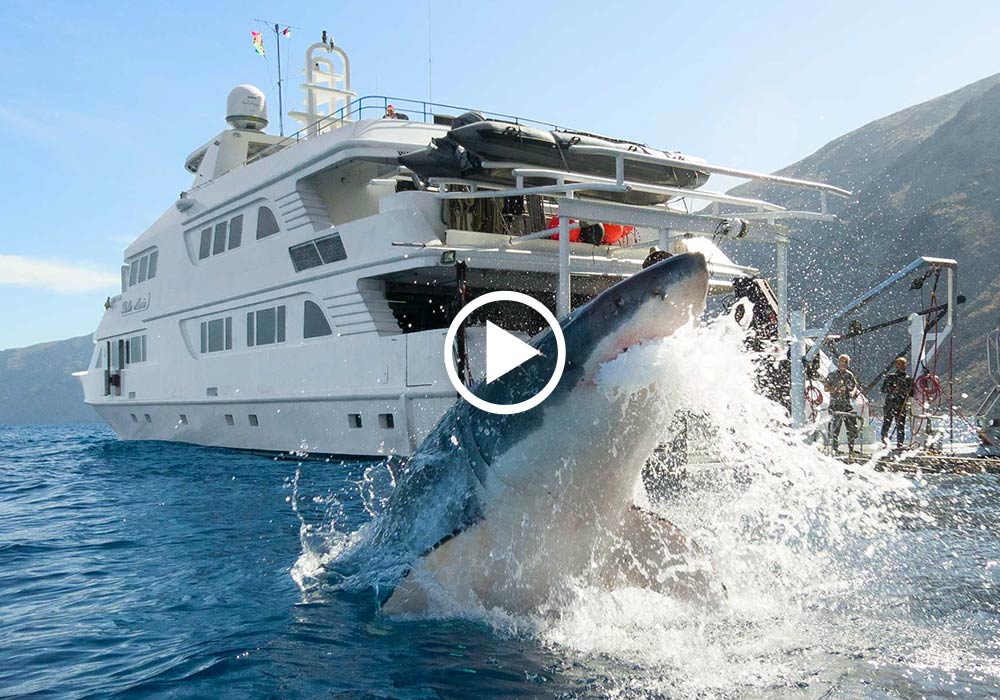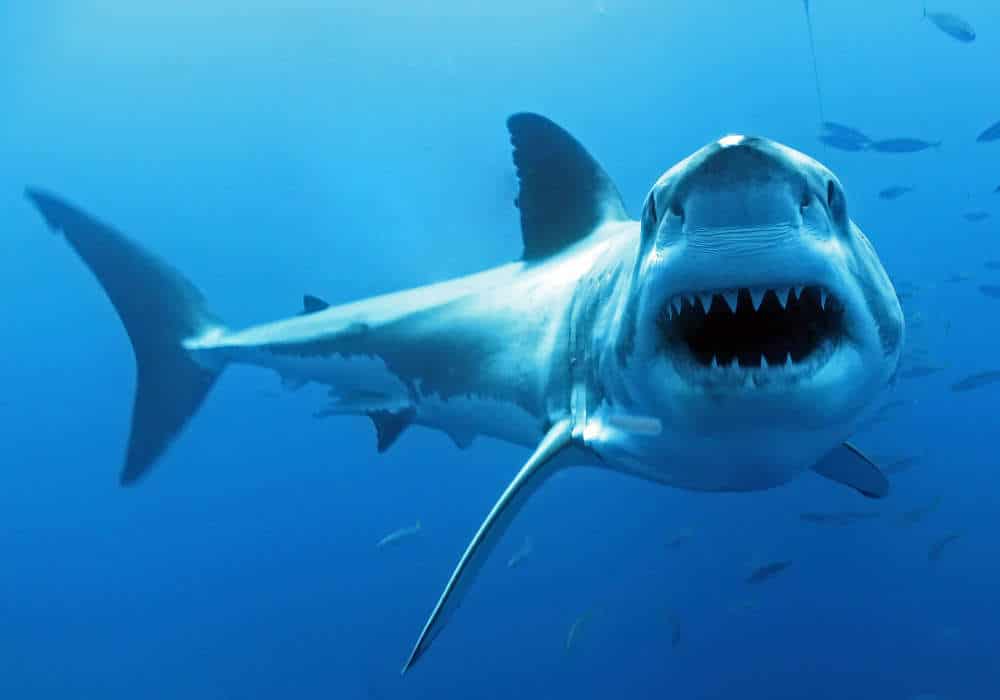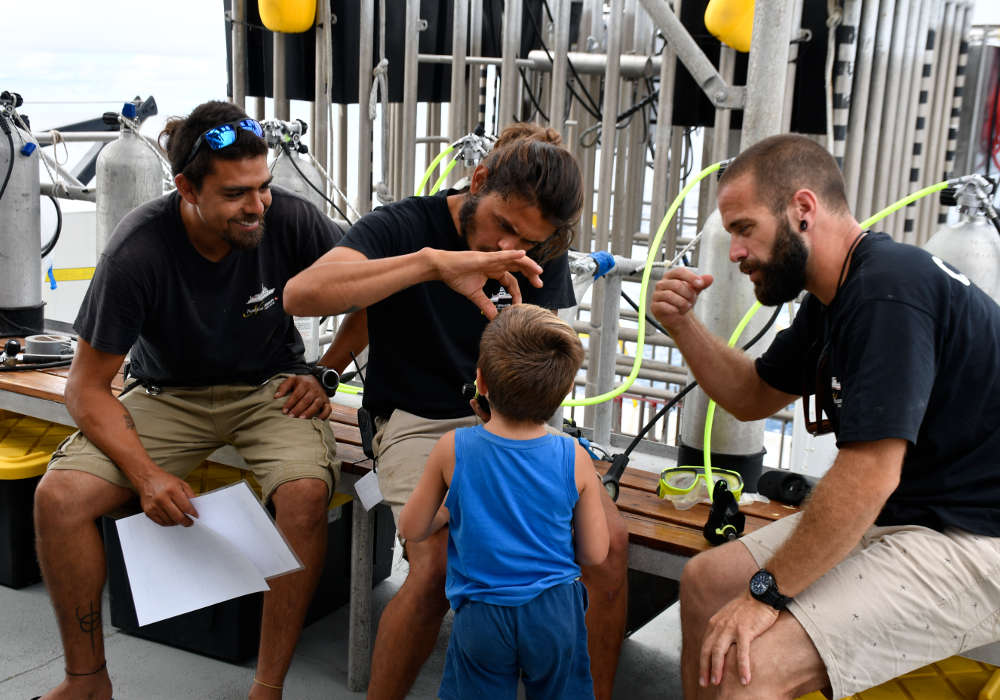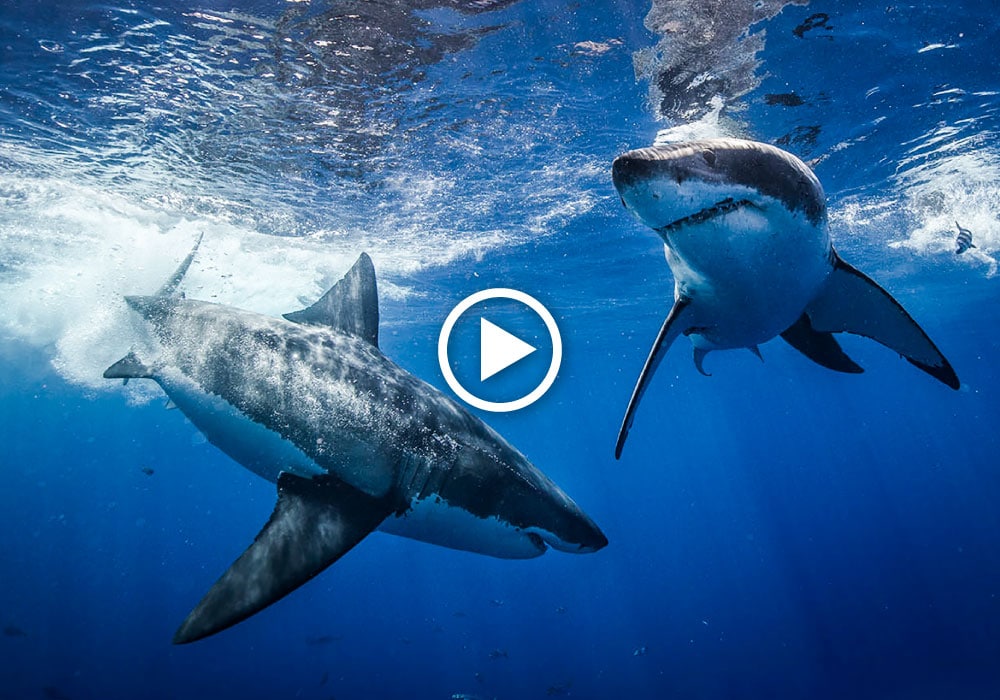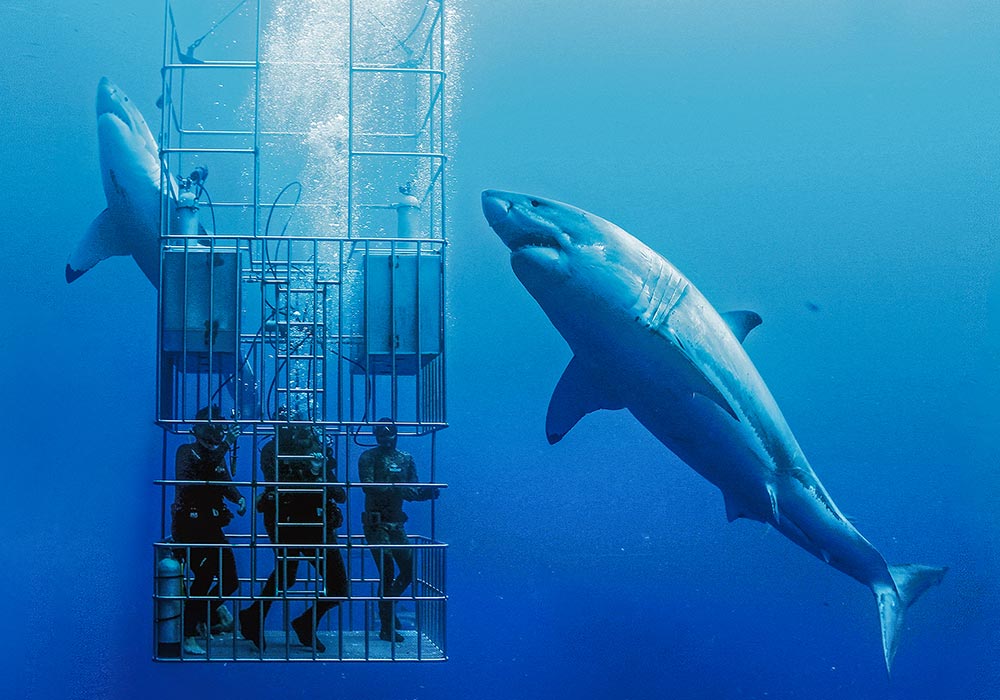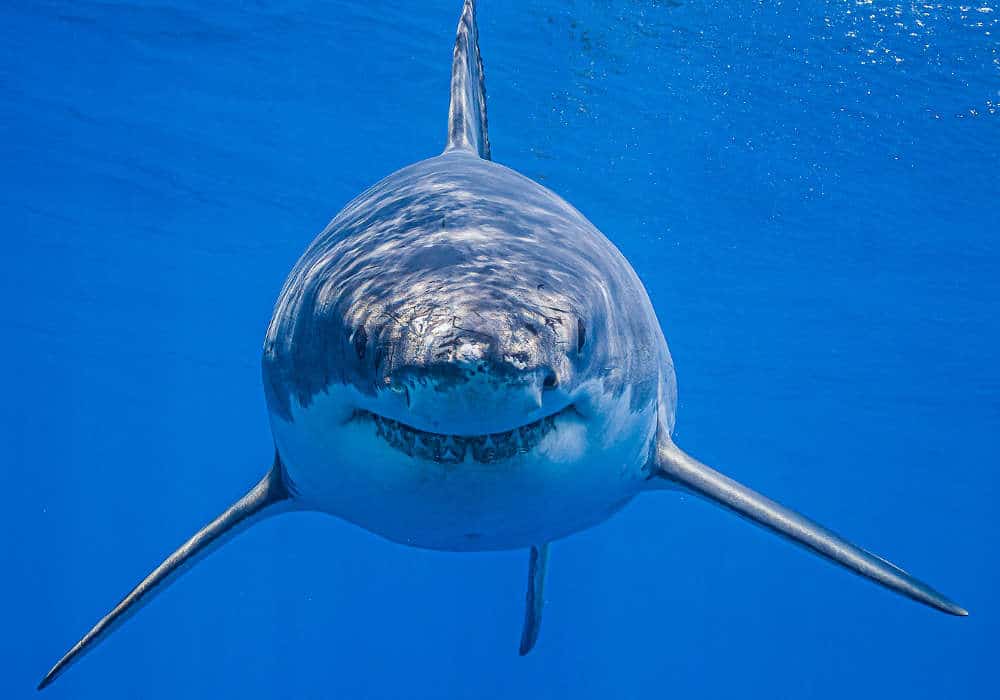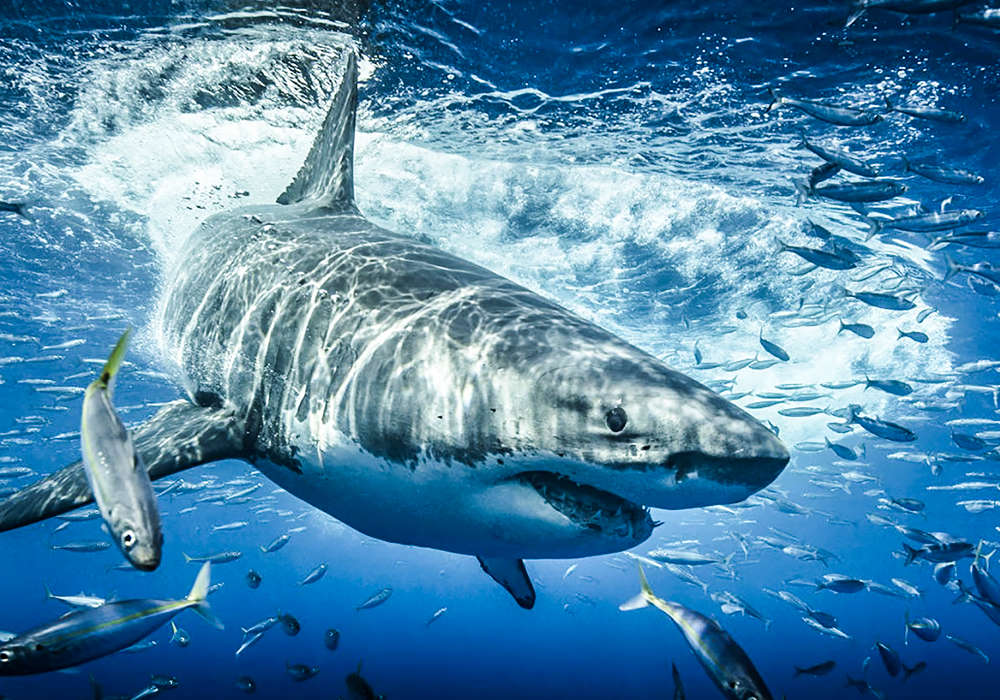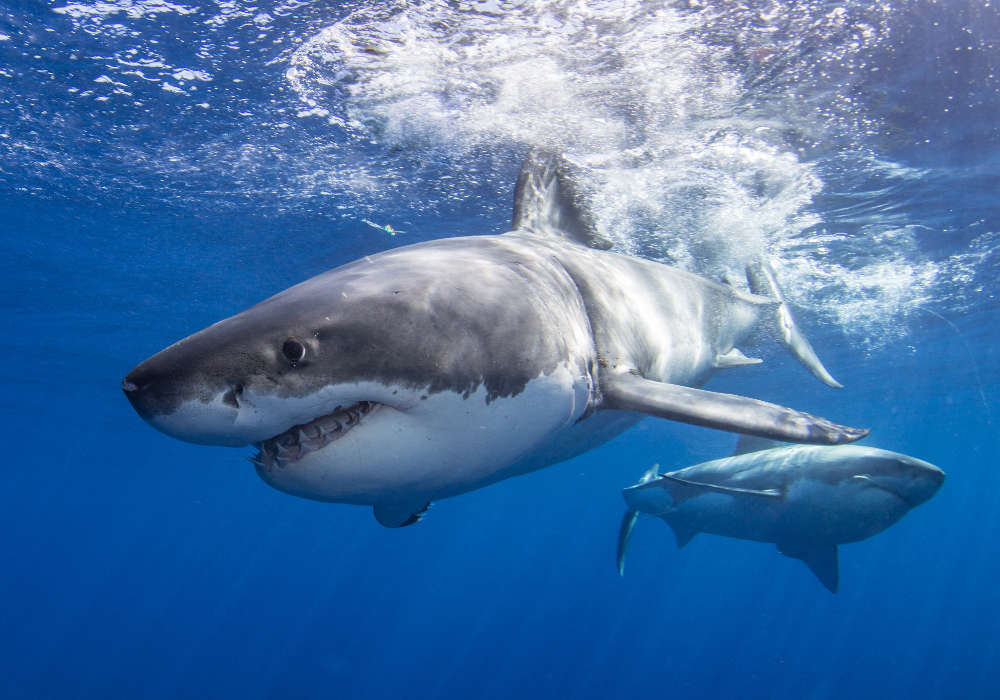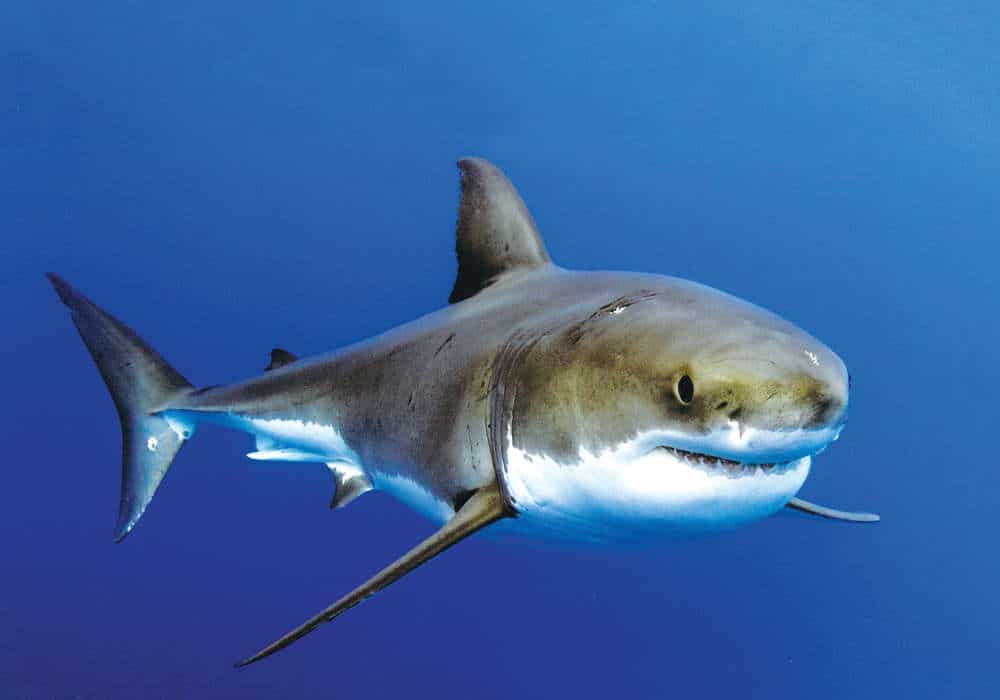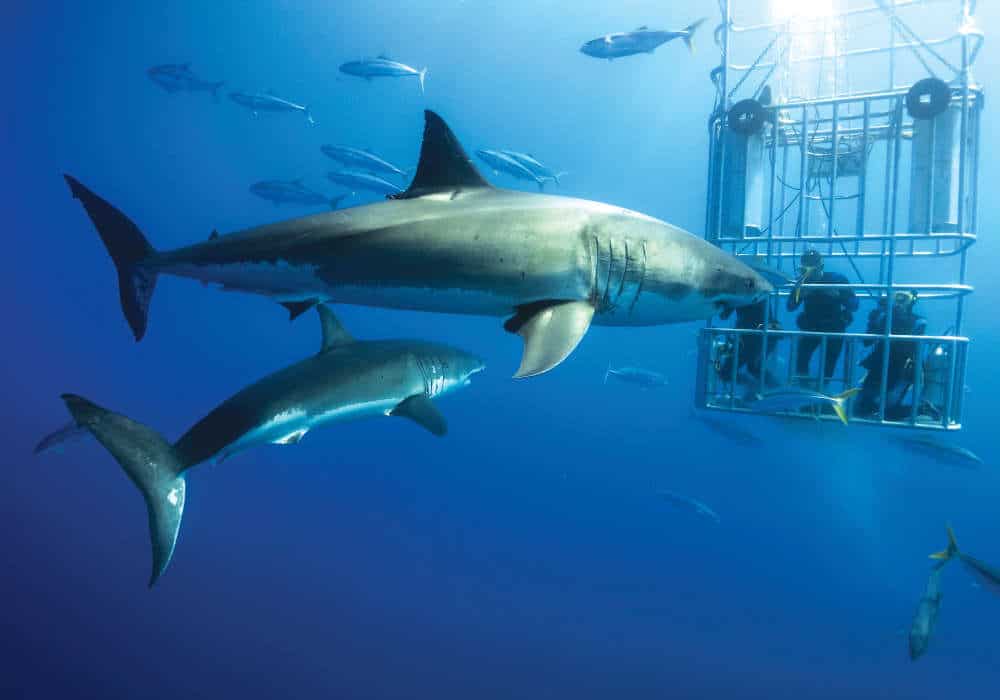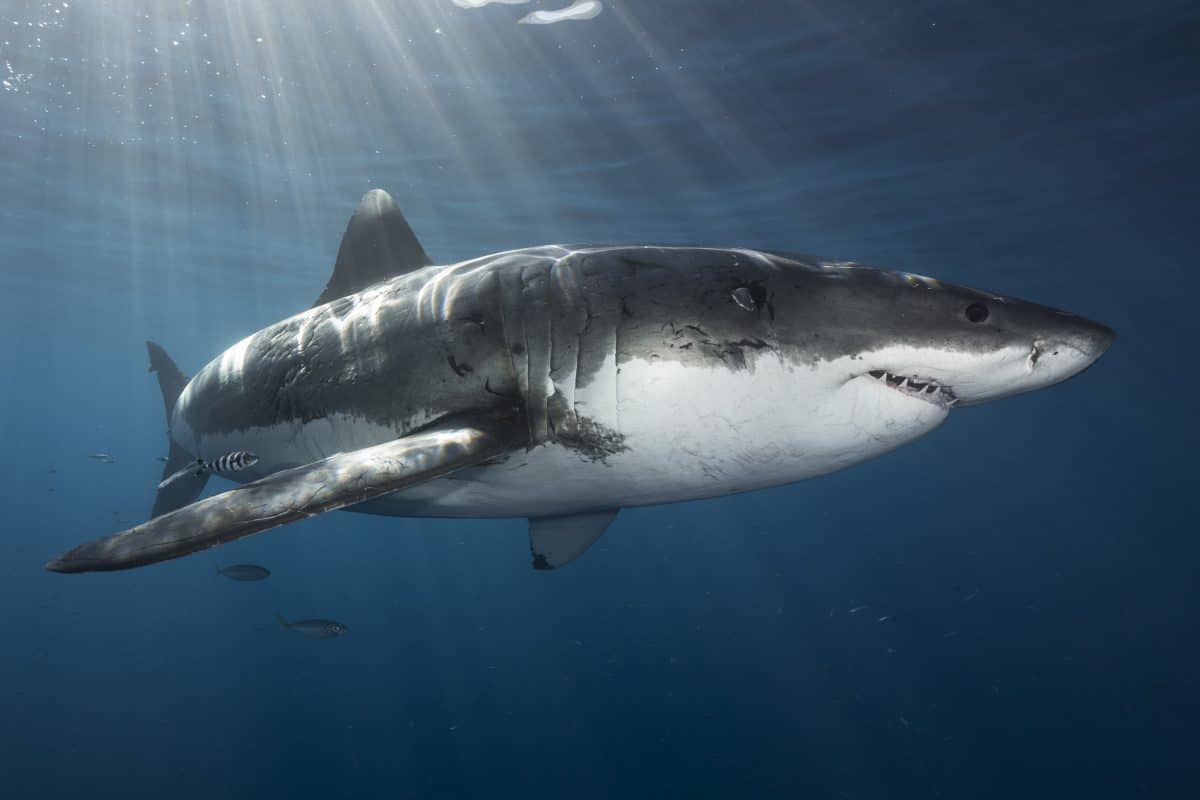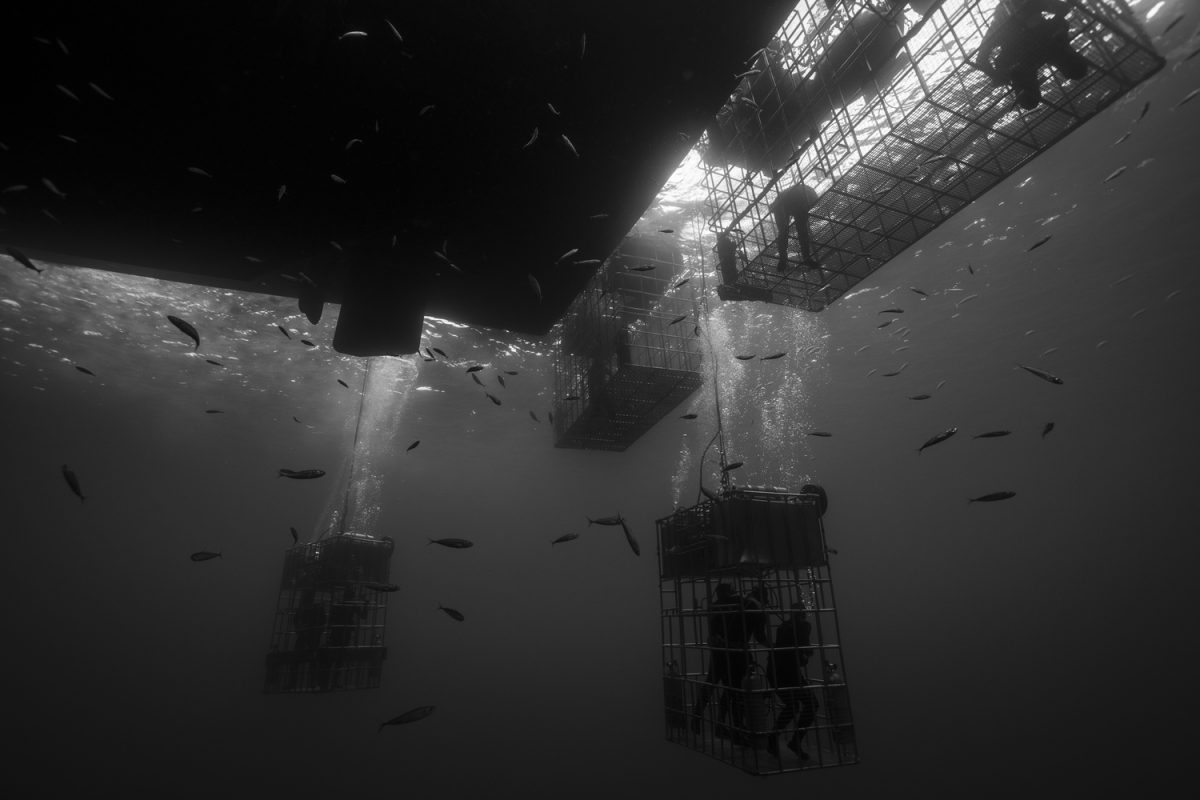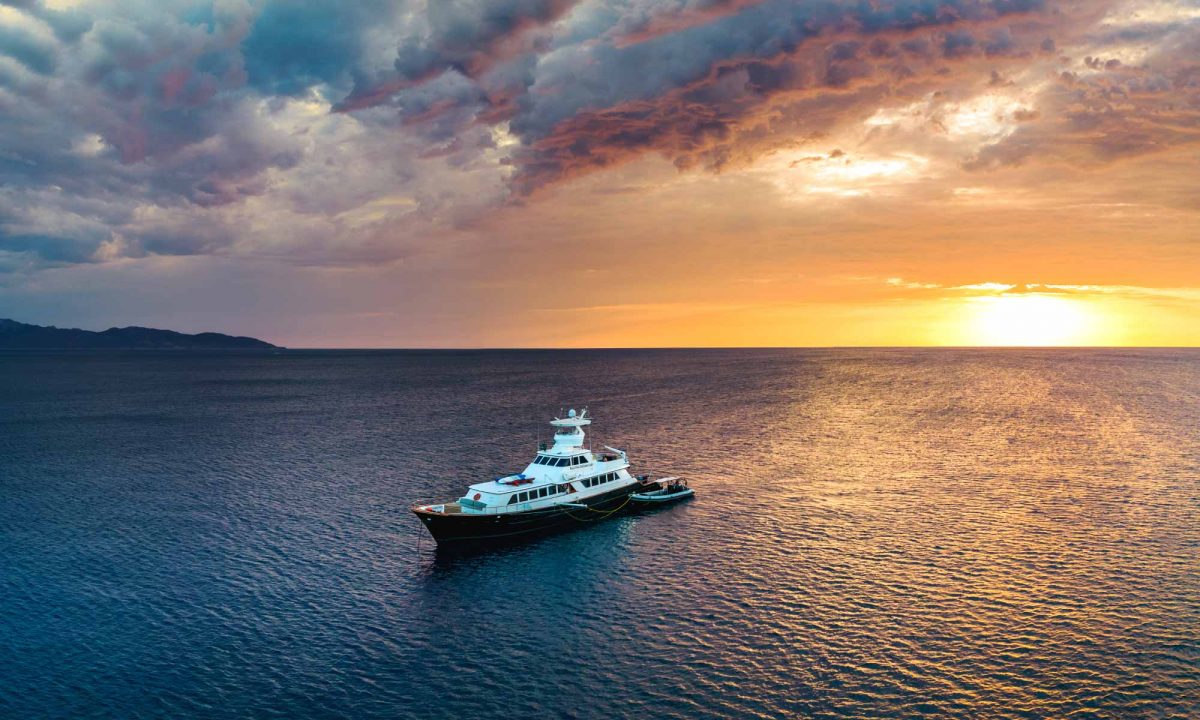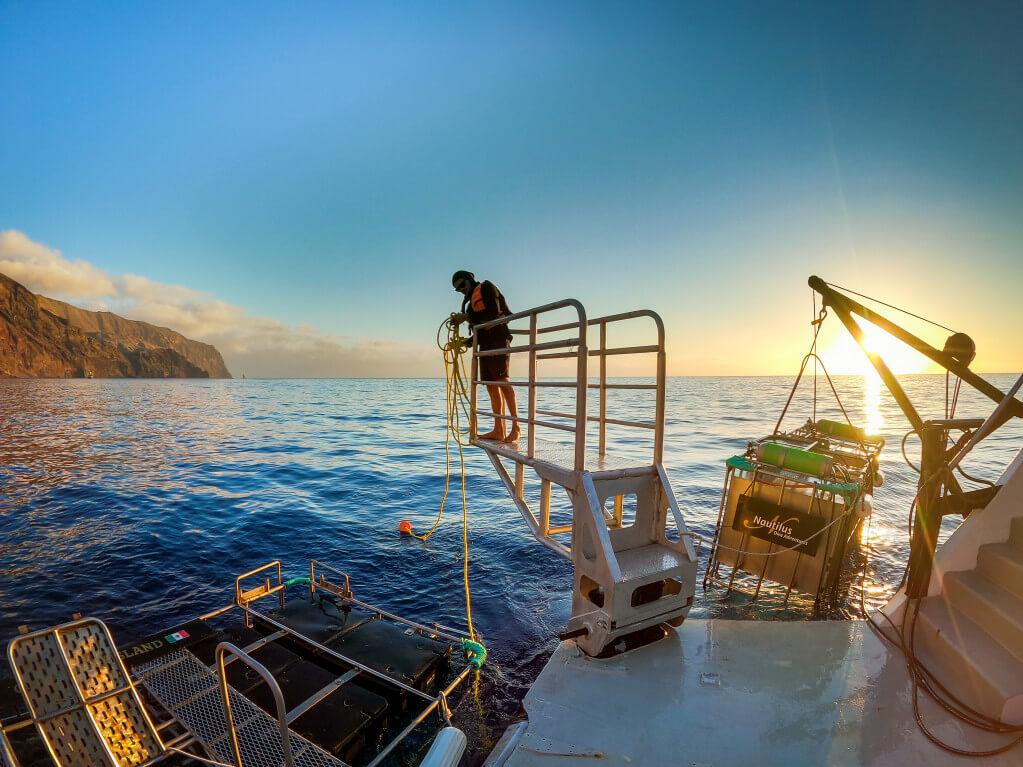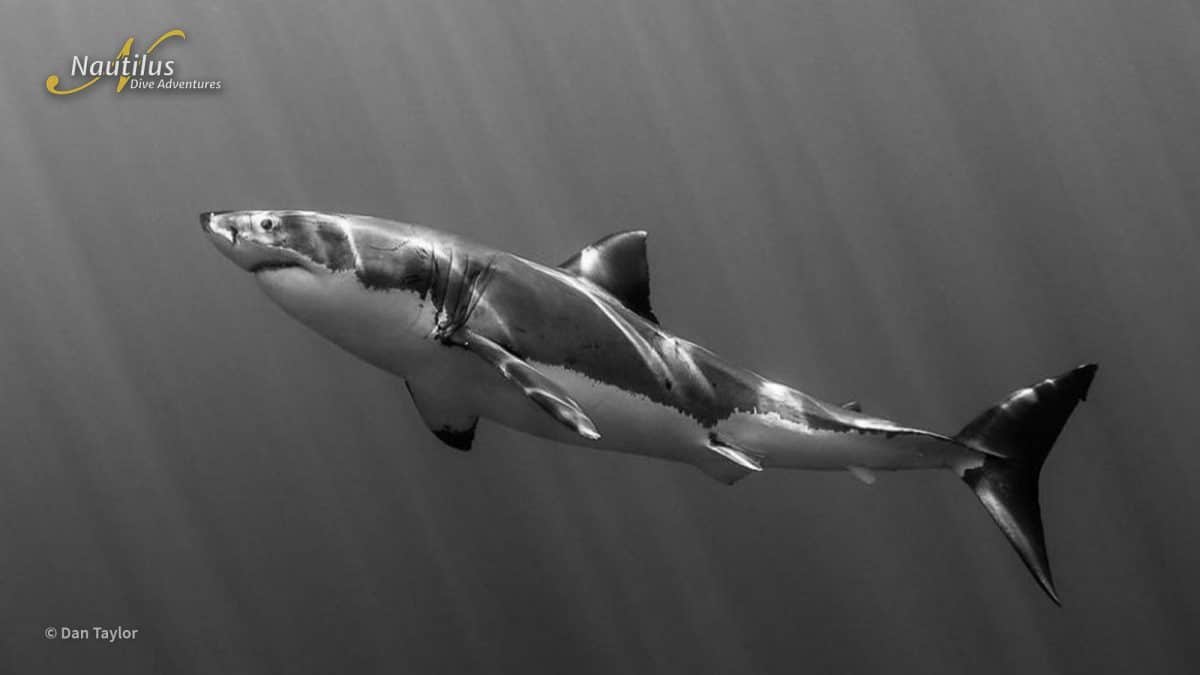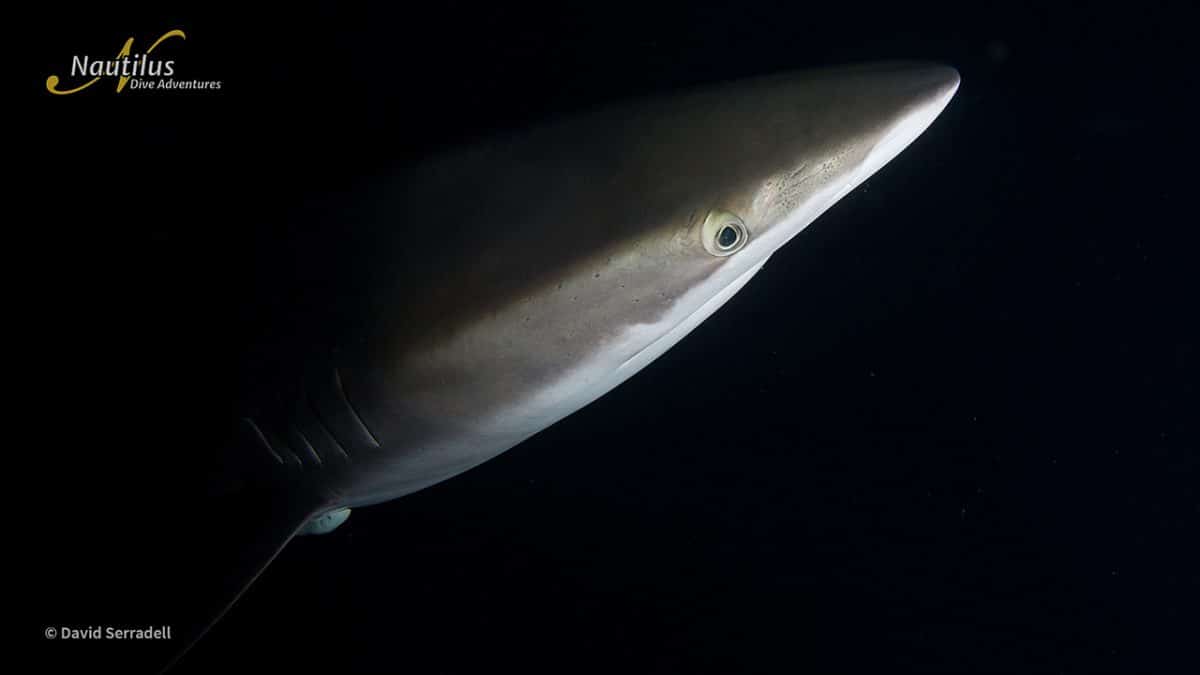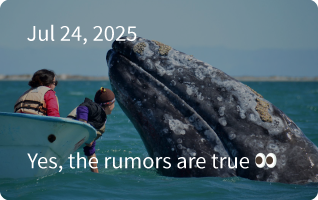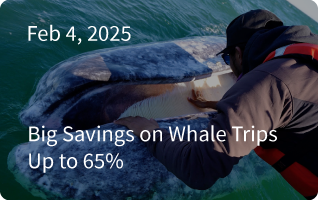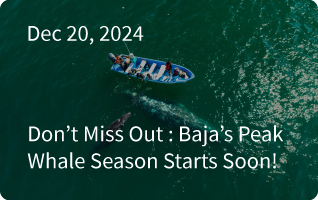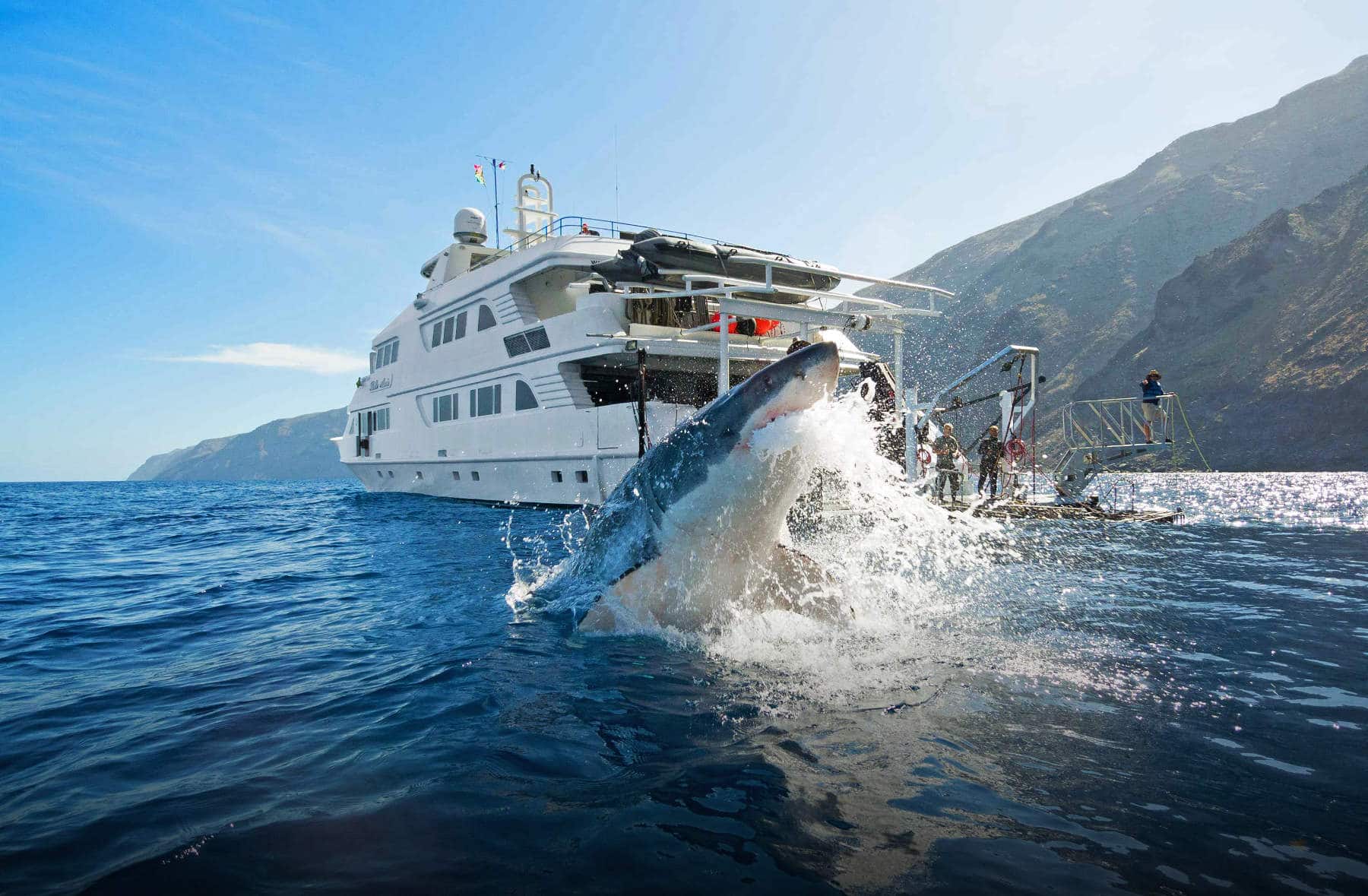
Because of action by the Government of Mexico, Guadalupe Island is temporarily closed for tourism and great white shark diving. We are sure that Guadalupe will reopen. Click here to subscribe to our newsletter and be updated on the latest Guadalupe news, updates, and special offers.
In the meantime, we’ve got some amazing alternatives for you to experience shark encounters. Explore other destinations like Socorro Giant Mantas and Sharks and Cocos, Island of the Sharks.
Let’s go shark diving!
The best Great White Shark cage diving on the planet
Great white shark encounters at Guadalupe Island are nothing short of spectacular. It’s simply the best destination in the world for calm clear water and consistently high probability of multiple shark encounters per day.
The sheer number of sharks in the bay that we cage dive in is amazing. On many dives, we see two to three great whites, although in July and August we have seen up to 47 sharks on one trip! Guadalupe Island is home to at least 366 individually identified sharks and still counting.
Great White Shark Cage Diving Calendar
July and August feature rowdy gangs of male sharks. Female great whites start showing up in August. “Big Mommas” October and November. Read more about Great White Shark facts.
Guadalupe Island Water Temperatures
Surface weather at Guadalupe Island is similar to southern California and can be quite hot during the day and cooler overnight.
